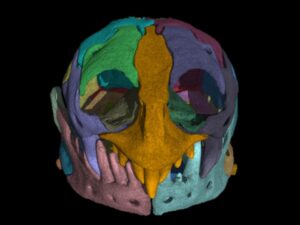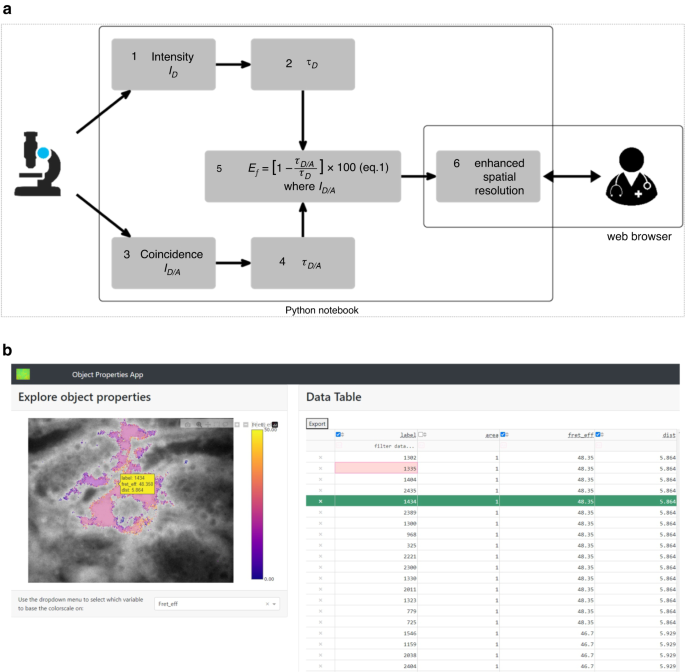2024-02-12 テキサス大学オースチン校(UT Austin)

<関連情報>
- https://news.utexas.edu/2024/02/12/bizarre-snake-like-worms-secrets-revealed-in-ct-scans/
- https://anatomypubs.onlinelibrary.wiley.com/doi/10.1002/ar.25321
- https://anatomypubs.onlinelibrary.wiley.com/doi/abs/10.1002/ar.25304
高分解能X線コンピュータ断層撮影に基づく両生類Zygaspis属の頭蓋骨格の変異 Variation in the cranial osteology of the amphisbaenian genus Zygaspis based on high-resolution x-ray computed tomography
Antonio Meza, Christopher J. Bell, Juan D. Daza, Monte L. Thies, Patrick J. Lewis
The Anatomical Record Published: 17 October 2023
DOI:https://doi.org/10.1002/ar.25321
Abstract
Amphisbaenians are a specialized fossorial group of reptiles, having developed head-first burrowing, a specialized skull architecture, and an elongated body. This group is generally small-bodied, with some species possessing skulls only a few millimeters long. In this study, we used high-resolution x-ray computed tomography to compare the skulls of 15 specimens from seven of the eight species in the amphisbaenian genus Zygaspis (Zygaspis dolichomenta, Zygaspis ferox, Zygaspis quadrifrons, Zygaspis kafuensis, Zygaspis nigra, Zygaspis vandami, and Zygaspis violacea). Both interspecific and intraspecific variation, including asymmetry, is observed among the cranial bones of the specimens. There are unique morphological features on some cranial bones, including the premaxilla and ectopterygoid of Z. quadrifrons, the pterygoid and vomer of Z. kafuensis, and the extracolumella of Z. nigra. Sexual dimorphism has been previously reported for the species Z. quadrifrons and is observed here as well.
高分解能X線コンピュータ断層撮影に基づく “丸頭 “アンフィスバエニアンZygaspis quadrifrons (Squamata, Amphisbaenia)の頭蓋解剖図 Cranial anatomy of the “round-headed” Amphisbaenian Zygaspis quadrifrons (Squamata, Amphisbaenia) based on high-resolution x-ray computed tomography
Christopher J. Bell, Cristhian Cadena, Antonio Meza, Lauren Rudie, Patrick J. Lewis
The Anatomical Record Published: 17 October 2023
DOI:https://doi.org/10.1002/ar.25304
Abstract
Amphisbaenians are a poorly understood clade of fossorial lizards. Because of their derived anatomy and relative scarcity, the systematics of the clade and its placement within squamates has long been controversial. Traditional approaches grouped species into four assemblages according to burrowing behavior and cranial morphology, resulting in the recognition of “shovel-headed,” “round-headed,” “keel-headed,” and “spade-headed” morphotypes. Recent phylogenetic analyses do not support the monophyly of the taxa that share those morphotypes. Detailed analyses of cranial osteology were previously accomplished using high-resolution x-ray computed tomography (HRXCT) for the “shovel-headed” Rhineura hatcherii (Rhineruidae) and the “spade-headed” Diplometopon zarudnyi (Trogonophidae). A detailed description of the “round-headed” Amphisbaena alba was previously completed based upon traditional “dry” skeletal specimens. Seven species of the “round-headed” Blanus (Blanidae) were also analyzed using HRXCT. The goal of that project was a comparative analysis of all extant species of Blanus rather than a detailed, bone-by-bone description of one species, but certainly is useful for comparison with another “round-headed” taxon. The “round-headed” morphotype is by far the most common among amphisbaenians and is much in need of further documentation. We use HRXCT imagery to provide additional data about the disparity in cranial morphology among amphisbaenians. Those data allow us to provide another detailed description of a “round-headed” amphisbaenian, the poorly known southern African species Zygaspis quadrifrons. HRXCT is ideal for this relatively rare and diminutive species. We are able to visualize and describe a detailed reconstruction of the entire skull as well as individual cranial elements. Comparisons with other species that were described in similar detail—D. zarudnyi, Spathorhynchus fossorium, R. hatcherii, and A. alba—and to a lesser degree with Blanus, reveal a complex mosaic of morphological features of the skull in Zygaspis. Preliminary data suggest that intraspecific variation is present within Z. quadrifrons, and interspecific variation among other species of Zygaspis may be sufficient for species-level recognition based on cranial osteology. Our description is, therefore, also intended to serve as a baseline for comparative analysis of other specimens of Z. quadrifrons and of other species within the genus.


